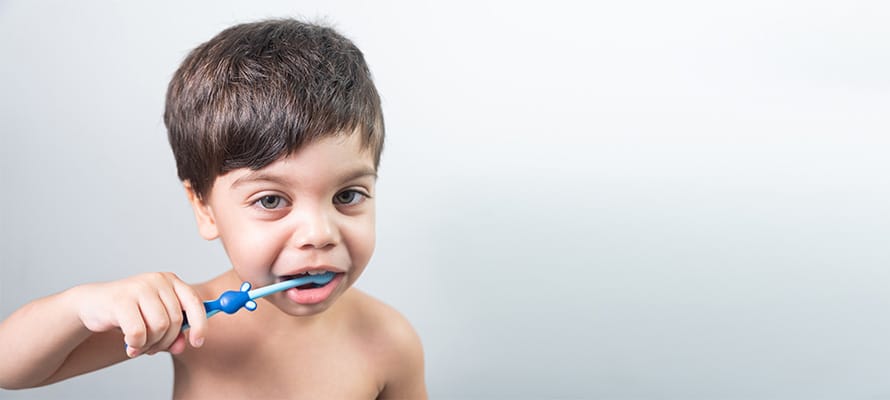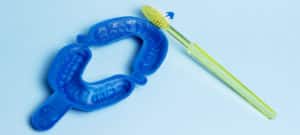The Best Time to Start Brushing and Flossing Your Child’s Teeth
It can seem like your child needs to grasp only a few more things before kindergarten, given all the things he or she is learning at any given moment. If you have not begun to establish healthy dental habits with your child just yet, don’t worry: You still have plenty of time. Here are some pointers for helping your youngster begin brushing and flossing in the right way.
There is a lot going on in a child’s life, so it can be difficult to find time for everything. Oral hygiene is an important element of child development. It’s vital to establish healthy dental habits early on in life in order to promote good oral health both now and in the future. Consistent brushing and flossing from an early age will establish a strong foundation for the rest of their lives.
While it may seem as though your child is learning a lot at any given moment, there are still plenty of things they still need to learn before kindergarten. If you haven’t begun the journey to good dental health with your child yet, don’t fret—there’s still a lot of time. Here are some pointers to help your child establish good dental hygiene habits from the beginning.
It’s never too early to get a head start on life.
Having a child start on the right oral hygiene track as soon as possible is contingent on starting them on the right track as early as possible. Setting up your children with the proper habits at the proper time will enable you to make brushing and flossing a family habit in no time. If your child is younger than three years old, you do not need to brush their teeth. You may still begin early, though. Brushing can be a regular aspect of your child’s life from an early age, making it easier for them to acquire the proper habits as they get older.
Having a brush.
It’s crucial that your child comprehends the significance of brushing. You must create a favorable association with the task and encourage them to take part early on. Rather than pressuring your child to brush independently, make it a family activity. Brush alongside your child and use brushing as a chance to inform them about oral health. If you have several children, rotate who brushes with you every day. By brushing with everyone, you’ll learn about brushing, and you won’t be forced to brush with the same child every day.
It’s important to make learning enjoyable.
You should attempt to create a favorable association with brushing as soon as possible. To make the procedure enjoyable, don’t simply take out the toothbrush and hope your child understands. If your child is old enough to comprehend the concept of make-believe, you may utilize it to your benefit. Make brushing a game, using a make-believe toothbrush, toothpaste, and everything else your child needs to make the concept real.
When teaching brushing and flossing techniques, be sure to vary your approach.
When your child learns more about brushing and flossing, you can alter your technique accordingly. Brushing and flossing at the start: You can brush alongside your child, using a very gentle motion at first. As time passes, you may gradually increase the pressure and improve the brushing process, but do not rush. Pushing too hard too soon may result in the opposite effect, teaching your child the wrong technique. If your child begins brushing on their own, make sure to still supervise and offer assistance if necessary.
It’s important to get a quality toothbrush and to brush your teeth at the right times.
Keeping your kid’s teeth clean and healthy is a critical aspect of brushing, so you must choose the correct kind of toothbrush. Select a low-bristled toothbrush for brushing your child’s teeth. A kid’s teeth and gums are still growing and developing, so you should brush carefully. Although brushing too much can damage your child’s teeth, you should not brush for too long. Brush for two minutes at a time (with 30 additional seconds for children who are very young). It is sufficient to clean your child’s teeth thoroughly without brushing too much. As your child grows, encourage them to brush for the entire two minutes.
Put a flossing tool in their hands as early as possible.
It’s vitally important for your child to grasp how critical flossing is as soon as possible, so you should start teaching them as early as three years old if they’re old enough. If you have an adequate dental flossing tool, you may start as early as three years old. Choose an instrument that your youngster can operate effectively, whether it’s a dental flossing pick or a regular piece of dental floss.
It’s imperative to begin young!
Brushing and flossing are the cornerstones of good oral hygiene, and they are truly lifesaving. These habits can prevent gingivitis, cavities, and other health problems. If your child needs a little extra encouragement to brush and floss, you can use these tips. Your child is learning so many things at any given moment that it might feel as if there are only a few things left to learn before kindergarten. However, don’t delay in introducing your child to brushing and flossing. Start early and make the process smoother and easier for everyone.
The convenience of a dentist appointment at your home is just one click away! Risio provides everything you need to maintain oral health with their online appointments, including safety and comfort.
To book your appointment call +91 9144544454 or contact us







